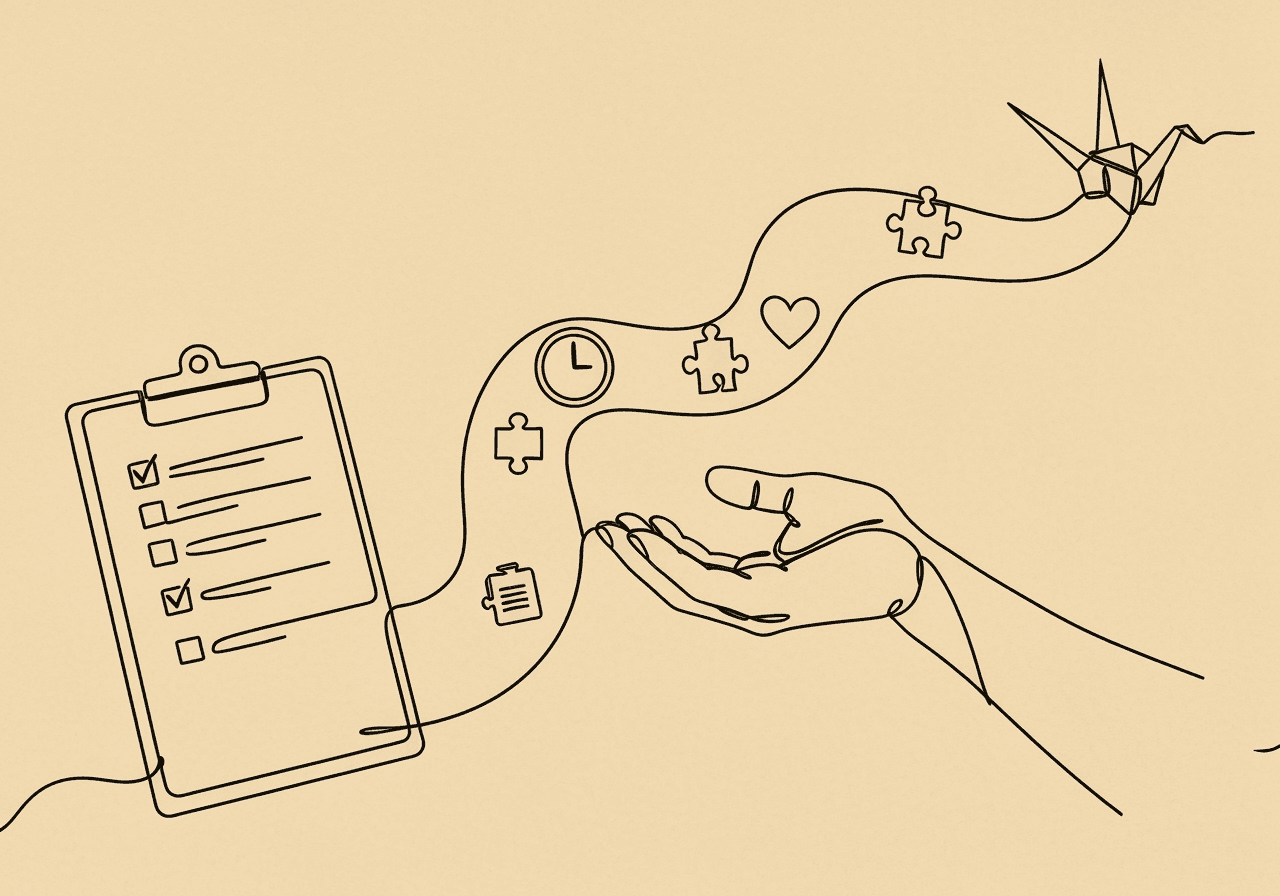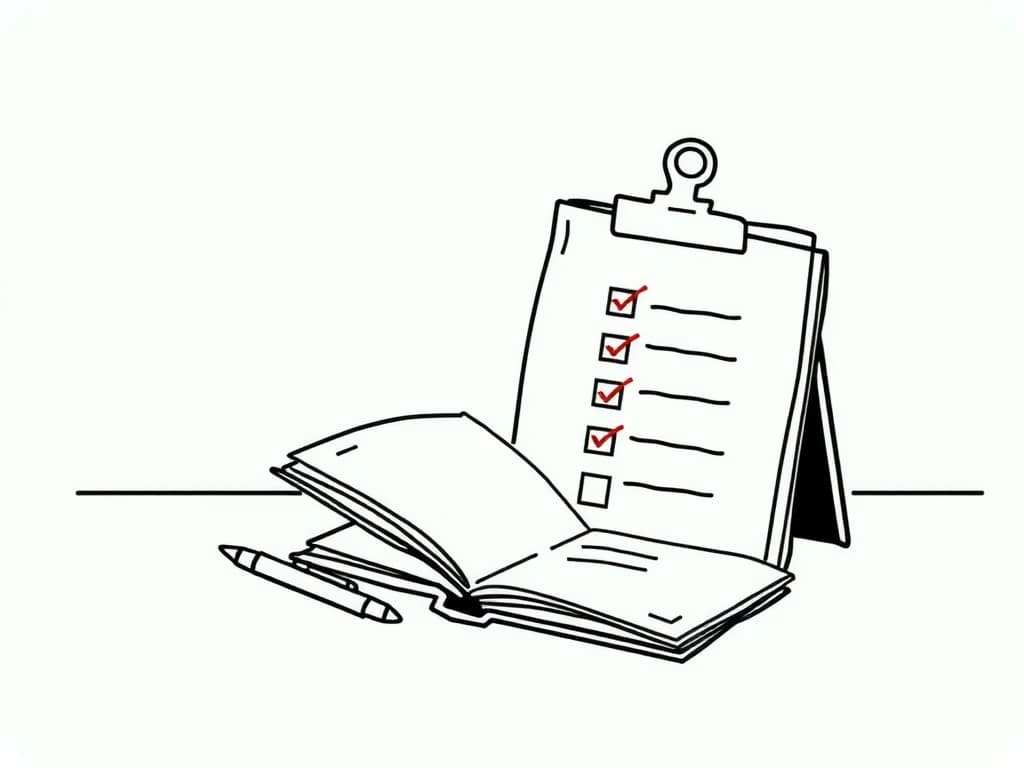RBT Session Workflow Checklist: Step-by-Step Guide

ABA therapy can feel overwhelming with its quick pace. But as an RBT, you know a solid routine makes all the difference. That's where an effective RBT session workflow checklist comes in. It pushes client goals forward while protecting your certification. This guide pulls from BACB ethics standards and best practices. It helps you focus on client care amid documentation demands.
By sticking to this workflow, you'll cut errors and build confidence. You'll cover everything from prep to wrap-up, including crisis tips and common FAQs. Let's dive in.
Here are five key takeaways from this RBT session workflow checklist:
- Verify authorizations early to stay compliant and avoid billing issues.
- Prep materials and environments to boost session efficiency.
- Track data in real time for accurate progress insights.
- Document crises factually to support safety and prevention.
- Review notes promptly to aid BCBA oversight and client outcomes.
Step 1: Pre-Session Check in the RBT Session Workflow Checklist
Start every session by reviewing the client's authorization and treatment plan. This keeps your work aligned with approved goals. It also ensures accurate billing under codes like 97153 for adaptive behavior treatment.
Check if the plan is current. Assessments often need updates every six months or as needed, per insurance rules. For example, confirm goals, frequency, and duration. If the plan calls for 20 hours weekly on social skills, spot any recent BCBA changes.
Key checklist items:
- Review client details like demographics, diagnosis, and allergies.
- Match targeted behaviors to interventions, such as discrete trial training.
- Note CPT codes and session limits to prevent overages.
This step supports procedural fidelity, as outlined in the BACB's RBT Handbook (BACB RBT Handbook (2024)). It lowers compliance risks right from the start.
Step 2: ABA Session Preparation
Good ABA session preparation lays the groundwork for smooth interactions and solid data. Gather client-specific materials, like visual aids or sensory items, to keep things on track.
Scan the environment for safety. Clear clutter at home or set up quiet spots in clinics. Have data tools ready, such as ABC charts, for quick notes on trial accuracy.
Take these essential actions:
- List session items, like flashcards for manding practice.
- Scan prior notes for patterns, such as a client's love for verbal prompts.
- Chat with caregivers about the focus. Their input helps with skill carryover.
Using digital templates here significantly reduces preparation time, per ABA documentation resources (Understanding Documentation in ABA Therapy (2023)).
Step 3: Implement the Plan in the RBT Session Workflow Checklist
Stick to the script during sessions for strong procedural fidelity. Deliver interventions as planned while noting data live. This keeps ABA evidence-based and trackable.
Use prompts and reinforcement wisely. For chaining tasks, try least-to-most prompting. Log hits, like "8 out of 10 independent tries." Fade prompts based on client signals to build skills.
Keep data flowing:
- Count target behaviors, such as cooperative play instances.
- Time durations or latencies with a timer.
- Check interobserver agreement during supervision.
The BACB pushes for honest, quick recording to guide progress (RBT Ethics Code 2.0 (2022)). Data overload happens, but steady tracking uncovers patterns. It increases compliance after reinforcer checks, as shown in behavioral research (Effects of reinforcer quality on behavioral momentum).
Step 4: Crisis/Incident Response Documentation
Crises like elopement or aggression call for fast, safe action. Document them clearly to prevent repeats and follow reporting rules.
Secure safety first. Use de-escalation, like offering breaks. Alert your supervisor right away. After, record facts only—what led up, what you did, and results.
Document these elements:
- Time and behavior details, e.g., "Client hit wall with hand for 5 seconds."
- Your steps and the client's reaction.
- Next actions, like checking the behavior plan for triggers.
Reports like this ensure compliance. Skipping them could affect your certification during BACB reviews. Accurate logs help cut recurrence by spotting patterns, per research (Relapse and its Mitigation: Toward Behavioral Inoculation).
Step 5: Post-Session Documentation as an RBT Documentation Guide
Finish with clear notes to sum up the session. This RBT documentation guide step aids BCBA reviews and keeps things ethical.
Log data soon—ideally within 24 hours—to fight memory slips. Cover duration, goals hit, and stats like "80% tacting trials mastered." Note hurdles, such as tiredness affecting focus, plus caregiver views.
Organize notes this way:
- Basic session info and client ID.
- Story of what went well and any changes.
- Secure upload for HIPAA rules.
Share summaries with your BCBA via email or log. Flag plan updates. Prompt notes help insurance claims. Many ABA clients miss full treatment due to doc gaps (Patient Outcomes in ABA (2021)).
Step 6: Transition & Next Steps in the RBT Session Workflow Checklist
Wrap up by setting up the future. This smooths handoffs and keeps momentum going. Talk session highlights with caregivers. Suggest easy home tasks, like skill practice.
Plan supervision next. Aim for at least 5% of your hours monthly, as the BACB requires (BACB RBT Handbook (2024)). Note handoffs or return materials.
Try these closing moves:
- Praise the client's wins.
- Refresh progress logs.
- Reflect on tweaks for next time.
Strong endings build learning and fight burnout. RBTs with heavy loads need this routine.
Frequently Asked Questions
What should be included in RBT session documentation?
Cover client info, date and time, goals, interventions, data like success rates, barriers, and signatures. The BACB requires objective, timely notes (RBT Ethics Code (2022)).
When should RBT session notes be completed?
Do them right after or within 24-48 hours for best accuracy. Delays can lead to mistakes and ethics issues (ABA Documentation Best Practices (2023)).
What are the best practices for documenting challenging behaviors?
Apply the ABC model: Note antecedents, describe behaviors factually (e.g., "Kicked leg 3 times"), and list consequences. Skip subjective words for solid analysis (RBT Session Notes Guide (2023)).
How does accurate documentation impact ABA therapy effectiveness?
It measures progress, guides changes, and boosts compliance for stronger results. Detailed records help address data collection variability, as seen in studies (Improving Accuracy of Data Collection on a Psychiatric Unit).
What tools help streamline RBT session workflows?
Apps for data entry, digital templates, and checklists ease the load. The BACB backs HIPAA-safe tools for audits (RBT Handbook (2024)).
How often should treatment plans be reviewed in ABA sessions?
Every six months or sooner if needed, based on insurance like Ambetter (ABA Documentation Requirements (2023)). RBTs check plans before each session.
This RBT session workflow checklist arms you for top-notch ABA delivery. It upholds BACB ethics from start to finish. Structured docs improve tracking and slash errors. Yet burnout lingers without habits—discontinuation hits about 31% in unstructured setups (ABA Outcomes Study (2021)).
Audit your recent session against these steps. Add digital aids for speed. Chat with your BCBA on custom fits. And remember self-care to keep supporting kids and families long-term.
Popular in ABA Session Notes & Tools
- 1
RBT Supervision Documentation: 2025 BACB Guide & Templates
9549 min read - 2
Master ABA Medical Necessity Documentation: Avoid Denials
4309 min read - 3
Master ABA SOAP Notes: Guide for RBTs & BCBAs
4259 min read - 4
ABA Documentation Best Practices for RBTs: Essential Tips
3765 min read - 5
Guide to ABA Progress Reports for Insurance Reauthorization
3578 min read
Popular in ABA Session Notes & Tools
- 1
RBT Supervision Documentation: 2025 BACB Guide & Templates
9549 min read - 2
Master ABA Medical Necessity Documentation: Avoid Denials
4309 min read - 3
Master ABA SOAP Notes: Guide for RBTs & BCBAs
4259 min read - 4
ABA Documentation Best Practices for RBTs: Essential Tips
3765 min read - 5
Guide to ABA Progress Reports for Insurance Reauthorization
3578 min read
Related Resources
Explore more helpful content on similar topics

RBT Environmental Variables Documentation: Essential Guide
Master RBT environmental variables documentation in ABA sessions with this essential guide. Learn pre-session checklists, objective descriptions of noise and temperature, and post-session summaries to enhance BCBA analysis and ensure compliance today.

RBT Supervision Documentation: 2025 Compliance Guide
Master RBT supervision documentation with this step-by-step guide to compliant notes. Learn BACB requirements, key elements for supervision notes ABA, and prep for 2026 changes to stay certified and excel in ABA.

BIP Documentation RBT: Step-by-Step Guide for Accurate Notes
Learn essential BIP documentation RBT strategies for ABA therapy. Master behavior intervention plan notes, BACB-compliant templates, and common pitfalls to boost client progress and compliance. Discover step-by-step guides now!